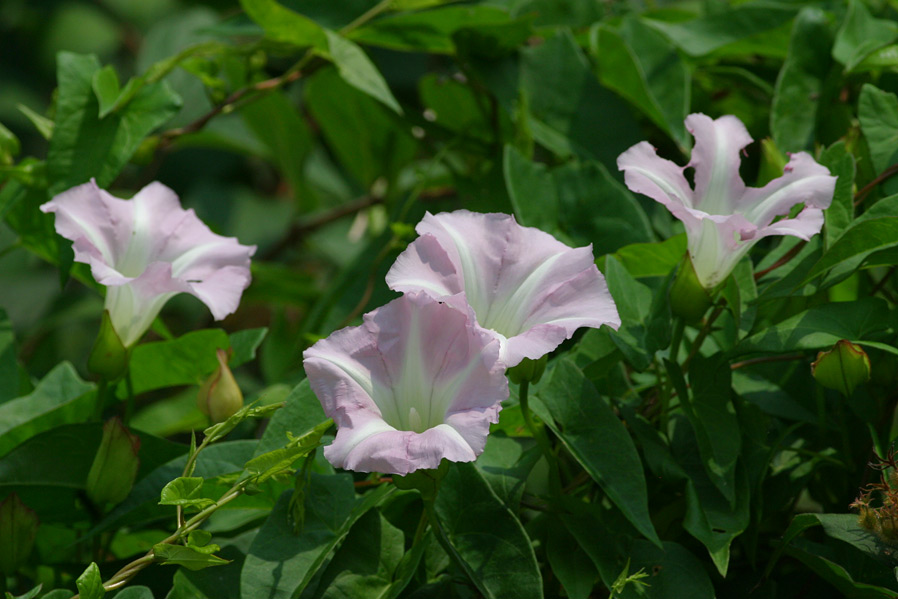Hedge bindweed (Calystegia sepium) brightens a corner near Dog Beach at Ashbridge’s Bay last week. © BCP 2010
Today’s quote: A morning-glory at my window satisfies me more than the metaphysics of books. — Walt Whitman
You have to look pretty hard to find these attractive blooms at Ashbridge’s Bay. And according to the various sources I consulted, that’s a good thing. For hedge bindweed, as Calystegia sepium is commonly known, is classified as a noxious weed.
According to wikipedia, this plant is distributed widely throughout the globe; it’s found in Europe, Asia, northwestern Africa, and North America in the northern hemisphere, as well as Argentina and Australia in the southern hemisphere.
Hedge bindweed is part of the morning glory family of flowering plants, the Convolvulacaea. They are a family of trees, shrubs and vines known for showy, funnel-shaped flowers. Many of the species (of about 1,500 in the family) are cultivated for their flowers. But then there’s the pesky bindweed.
Here’s what my favourite wildflower handbook, National Audubon Society Field Guide to North American Wildflowers, says about hedge bindweed:
“It can be a pest, twining among and engulfing desirable ornamentals, and it is difficult to eradicate without removing the fleshy, creeping roots.”
Wiki goes on to say that this herbaceous perennial twines around other plants in a counter-clockwise direction. (I wonder if it goes in the opposite direction in the southern hemisphere?)
At any rate, we can enjoy the big, pink blooms of hedge bindweed for a while. There’s so little of this weed at our bay — so far, at least — that it doesn’t seem to pose an imminent threat to its ecosystem.
© BCP 2010




no comments